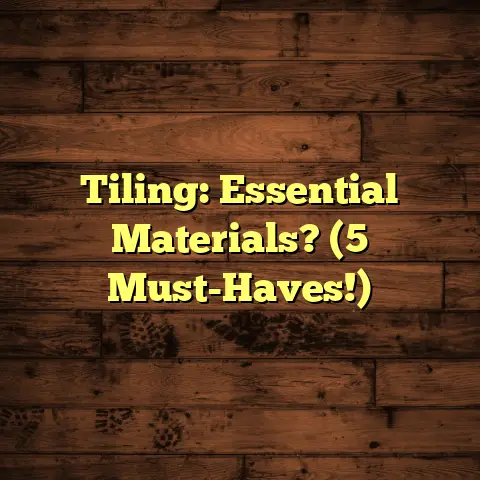Cost Saving Tips For Skipping Stain On Engineered Hardwood Floors
Engineered hardwood flooring has become an increasingly popular flooring option for homeowners. Made of multiple layers of wood pressed together, engineered hardwood is more stable than solid hardwood, making it ideal for installation below grade or over concrete.
One decision homeowners face when installing engineered hardwood is whether to apply stain. Stain adds color variation to the floors, enhancing the wood’s natural grain patterns. However, skipping stain provides significant cost savings in both materials and labor.
This guide will discuss the pros and cons of skipping stain and provide useful tips on how homeowners can achieve cost savings without sacrificing style.
Reasons Homeowners Choose to Skip Stain
There are several compelling reasons homeowners may opt out of staining their new engineered hardwood floors:
Lower Material Costs
Stain, sealers, and protective finishes add considerable costs to flooring installation. Prefinished engineered wood comes ready to install, avoiding these extra expenses.
Reduced Labor Time and Costs
Applying stains and finishes is time-intensive, whereas prefinished flooring does not require this step. Since professional installation is typically charged by the hour, skipping staining can yield substantial savings.
Greater Simplicity and Convenience
Skipping stain means fewer steps in the installation process. Prefinished floors also produce less dust and fumes and can be walked on sooner than site-finished floors.
Expanded Style Options
Prefinished engineered wood is available in numerous stain colors and gloss levels, providing many options without custom staining. This allows coordinating with existing décor easily.
Cost Comparison of Stained vs Unstained Engineered Hardwood
To demonstrate the potential cost savings, here is a typical cost breakdown:
Stained Engineered Hardwood Floors
- Engineered wood flooring: $7/sq.ft
- Stain: $0.75/sq.ft
- Sealer: $0.60/sq.ft
- Polyurethane finish: $1.50/sq ft
- Labor for staining/finishing: $3/sq.ft
- Total: $12.85/sq.ft
Prefinished Engineered Hardwood
- Prefinished engineered flooring: $8/sq.ft
- Labor for installation only: $2/sq.ft
- Total: $10/sq.ft
As shown, skipping the staining process results in $2.85/sq.ft in savings, which can add up to over $2,800 for 1,000 sq. ft. This demonstrates the potential for massive cost differences.
Tips for Cost Savings When Skipping Stain
If you decide to skip staining your new engineered floors, consider these tips:
Choose Factory-Finished Flooring
Opting for prefinished engineered wood means the finishing steps are done at the factory, not only saving costs but also ensuring consistent quality.
Select a Durable Finish
Aluminum oxide and ceramic-infused finishes resist scratches and wear well over time. Though more costly upfront, durable finishes save money long-term.
Consider Low-Sheen Finishes
Glossier finishes show more scuffs, dirt, and imperfections. While matte or satin finishes better hide wear, providing a richer look overtime.
Install Floors Last
If undergoing a full remodel, have the engineered wood installed after all other trades finish to avoid construction damage. Cover floors with rosin paper before furniture move-in.
Buy Extra Flooring Upfront
Having leftover flooring allows easily replacing damaged boards in the future, preventing costly patchwork. Calculate 10-15% overage.
Maintain Floors Properly
Follow the manufacturer’s maintenance guidelines. Basic upkeep like sweeping debris before it scratches the finish saves unnecessary floor replacement costs.
Style Considerations for Skipping Stain
While staining offers endless custom color options, skipping stain does not mean sacrificing style. Here are ideas for achieving beautiful floors without staining:
Select Rich, Dynamic Wood Species
Woods like hickory, Brazilian cherry, tigerwood, and American walnut have striking grain patterns and warm reddish-brown hues providing plenty of style.
Use Wide-Width Planks
Wider planks better showcase the wood’s innate character. Five or seven-inch planks add drama and visual interest to spaces of all sizes.
Play with Gloss Levels
Glossy finishes reflect light, adding movement and contours to the floor’s appearance. Low-sheen options impart a sophisticated, natural look.
Incorporate Interesting Grain Patterns
Distressed, hand-scraped, wire-brushed finishes make the grain pop beautifully. Curly or swirled grain woods like hickory or maple also impress.
Complement with Decor
Strategically placed rugs, natural fiber carpeting, or tile inlays help highlight the floor’s organic beauty while adding visual appeal.
Contrast Light and Dark Woods
Blending lighter and darker wood tones, whether within flooring planks or next to existing floors, creates appealing variation.
Answers to Common Questions About Skipping Stain
Many homeowners have additional questions when weighing staining versus prefinished floors. Here are answers to some most frequently asked questions:
Does Skipping Stain Limit Color and Style Options?
No. Leading brands offer prefinished engineered hardwood in a vast selection of stain colors and gloss levels. Specialty finishes like distressed or wire-brushed are also available prefinished.
Can More Stain Be Added Later If Desired?
Yes, though the process is more complicated than staining unfinished floors. The existing finish must be sanded off first, producing dust and fumes. Labor costs also apply.
Do Prefinished Floors Appear Fake or Plastic-Like?
Prefinished engineered wood today features advanced finishes that closely emulate traditional site-applied stains. When professionally installed, prefinished floors have an authentic, high-quality appearance.
Is Durability or Scratch-Resistance Compromised Without Stain?
No. In fact, factory finishes applied under controlled settings often outperform site stains and offer exceptional durability. Many include aluminum oxide or ceramic particles for added wear protection.
Can Any Sheen Level Be Achieved with Prefinished Flooring?
Yes, unfinished and prefinished floors have equal abilities to achieve matte, satin, semi-gloss or high-gloss sheens. The finish is determined during the final sanding and coating process at the factory.
Conclusion
Skipping stain on engineered hardwood undoubtedly saves big on flooring costs, both on materials and professional installation. Fortunately, prefinished floors today offer seemingly endless options to match any style.
By selecting richly-grained wood species, playing with plank widths, considering unique finishes, or complementing with décor, homeowners can still achieve their dream floors without staining. While staining provides total customization, smart design choices deliver stunning results at a fraction of the price.





